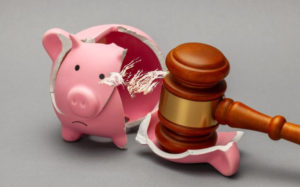 Filing for bankruptcy is never an easy decision for a business owner. However, when times get tough, it can often be the best move available to you. If you’re an entrepreneur who’s considering filing for bankruptcy, take these three tips into account before you make it official. Click here for an experienced Insolvency Practitioner to guide you through the process.
Filing for bankruptcy is never an easy decision for a business owner. However, when times get tough, it can often be the best move available to you. If you’re an entrepreneur who’s considering filing for bankruptcy, take these three tips into account before you make it official. Click here for an experienced Insolvency Practitioner to guide you through the process.
Tip #1: Determine Whether You Need to File for Bankruptcy
If you’re an entrepreneur who’s considering filing for bankruptcy, then there’s no doubt that you’re in some kind of financial trouble. Perhaps you rolled out your product or service at the wrong time, or you conducted a market analysis and found favorable conditions, but then the market took a nosedive the moment you entered it. On the other hand, maybe you made some management errors that proved costly for your business, or you got pushed out of the market by a competitor. There are a seemingly endless number of reasons that force a business to end up in financial peril. But with the economic depression that’s set in as a result of COVID-19, many businesses—from restaurants in New York to hotels in Hawaii—have found themselves in the same position as yourself.
Whatever the case may be, before filing for bankruptcy you should take some time to consider if there are any other possible options available to you. Are there any costs you could cut in order to keep your head above water? Are there any business practices that you still have time to change? Is it still possible to reach out to your creditors and renegotiate your debt?
If the answer to all of these questions is no, and you don’t see any other way out of your financial predicament, then bankruptcy may be the only answer. However, you should keep in mind that bankruptcy isn’t the end of the world. In fact, in some cases it’s actually a smart move that you can take in order to shield yourself from aggressive creditors and preserve your financial well-being.
Tip #2: Hire a Lawyer
Filing for bankruptcy can be an extremely arduous and complicated process, so it’s best to hire someone who knows what they’re doing to help you out. Once you’ve determined that bankruptcy is the only option available to you, consult with a bankruptcy lawyer in order to figure out your next steps. Keep in mind that bankruptcy laws vary based on where you live, so if your business is based in Chicago, for instance, then you’ll want to find a bankruptcy lawyer in Chicago who’s familiar with the local laws and regulations.
Tip #3: Decide Which Type of Bankruptcy is for You
Before filing for bankruptcy, you’ll have to decide which type of bankruptcy makes the most sense for your particular situation. There are three separate types of bankruptcy: Chapter 7, Chapter 11, and Chapter 13. Let’s discuss the major differences between these three.
Chapter 7 bankruptcy is used to essentially close down and liquidate a business entirely. Seeing as it eliminates unsecured debts and liquidates your business, a Chapter 7 bankruptcy is commonly used by small business owners who have taken on a lot of outstanding debt, but have very little income and few assets. It’s also beneficial to small business owners who just want to shut their business down, and don’t want to deal with things like negotiating with creditors and selling off their assets. That’s because, in this case, a bankruptcy trustee would be put in charge of liquidating your business’s assets and negotiating with creditors.

Chapter 11 bankruptcy is primarily used by corporations who are experiencing debt or cash flow problems, but don’t want to shut down entirely. This type of bankruptcy protects a business from creditors as it attempts to reorganize its finances under the watch of a court-appointed bankruptcy trustee. However, Chapter 11 can be a long, complicated, and, in the long-run, expensive process, which is why it’s almost always used by corporations or large companies.
Finally, you file a Chapter 13 bankruptcy when you and your business are legally considered to be a single entity. This type of bankruptcy usually means you don’t have to liquidate your assets but, on the other hand, you have to sort out a plan to repay your debts over a period of time. This approach is typically used by small business owners who continue to maintain an income with cash optimization and have a great deal of assets that they want to protect from seizure by creditors.
Sometimes filing for bankruptcy is inevitable. But, when you’re forced to take that step, make sure you do the right way, in order to protect yourself and your assets to the greatest possible extent.


